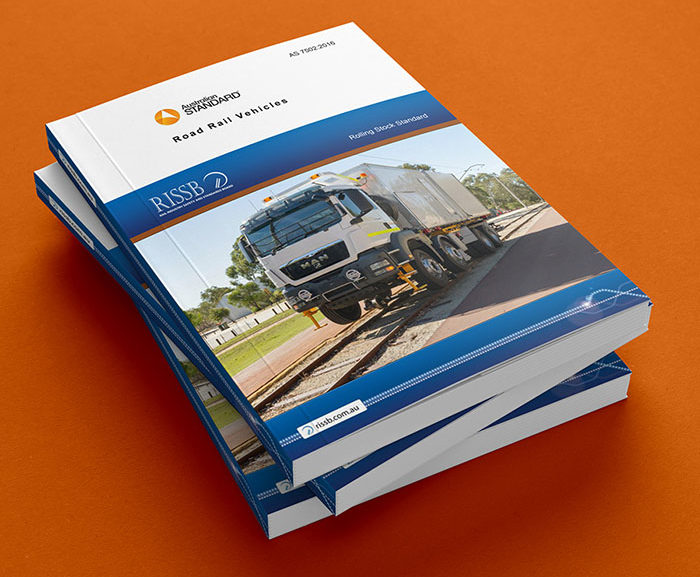The new Australian Standard for road-rail vehicles, AS7502 was published on July 1st 2016.
Following many months of work by the Rail Industry Safety and Standards Board (RISSB), the Office of the National Rail Safety Regulator (ONRSR) and industry experts, AS7502 sets out the minimum standard to which, road-rail vehicles should be designed and manufactured.
RISSB members may download the standard from the RISSB website and non-members can purchase it from SAI Global
The standard covers all aspects of vehicle from braking systems and event recorders to engineering, design and manufacture. There is far too much to list here so here are some points of interest:
Design and Engineering
All road rail equipment must be designed by a qualified engineer. AS7502 sets out a number of loads that the road-rail equipment must be able to withstand and the engineer must be able to demonstrate compliance in an engineeringdesign report that includes how the loads have been determined – It is no longer acceptable to only produce a simple one or two page certificate.
The designer must conduct a thorough analysis of the vehicle chassis to determine that is is suitable for use on-rail and that it can withstand the loads applied.
Twist Test
All road-rail vehicles must be subject to an annual twist test. Previously some networks only required a twist test to be carried out when the vehicle was constructed. It is now mandatory that all road-rail vehicles are subject to a twist test every year.
The twist-test requirements are set out in AS7502 and it should be noted that some imported road-rail vehicles may not pass the twist-test requirements of AS7502
Suspension Component Loading
Suspension components should be used only in accordance with the component manufacturer’s specifications, unless validated by a competent engineer. This means that it is no longer acceptable to over-load suspension parts such as flexitores based on informal workshop testing and undocumented historical data. The component manufacturer’s rating must not be exceeded.
Brakes
At least one pair of wheels that contact the rail (road or rail wheels) must be fitted with fail-safe brakes. This braking system must ensure that any failure in a predictable or specified mode will apply the brakes automatically.
Park brakes must apply automatically in a number of situations including when the driver opens the cabin door.
Road-to-Rail Transition
It must not be possible to move both front and rear rail guidance systems at the same time.
Event Recorder
Road-Rail vehicles must be fitted with an event recorder that can be used during incident investigation. The event recorder will log vehicle speed, direction of travel and several other important parameters
Manufacture
All welding must be carried out in accordance with AS1554. It is no longer acceptable to state that the vehicle has been constructed only to “relevant parts” of AS1554 – Full compliance automatically dictates what is relevant.
Compliance with AS1554 should be demonstrated through documentation such as pre-qualified welding procedures.
Aries Rail are happy to guide you through the implications of AS7502 and have put together a number of different resources.
Introductory Event
We will be holding an AS7502 introductory event very soon. To register your interest and to be notified as soon as places are available, subscribe to the events on our Facebook page or send us an email from the contact us page.
Online Resources
Follow us on Facebook to keep up to date with current industry news and products.
Browse the news section of our website regularly to find articles relating to compliance with AS7502 and other standards.

